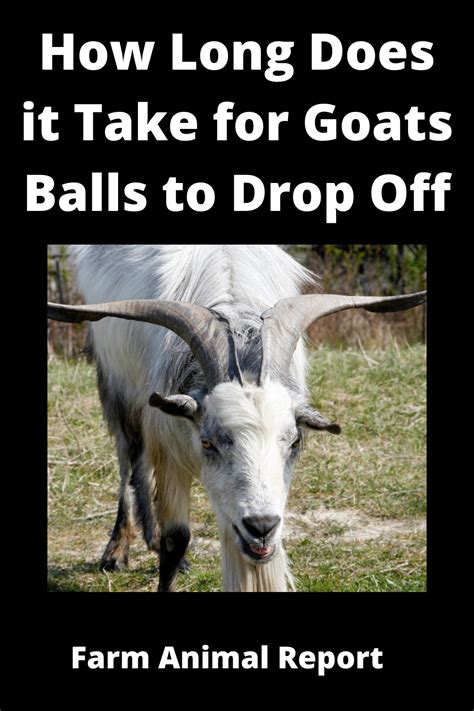Goat Banding: Balancing Benefits and Risks by Age
Goat banding, the practice of applying a band to a goat's scrotum to castrate it, is a common procedure with both benefits and potential risks. Understanding these, especially in relation to the goat's age, is crucial for responsible animal husbandry. This article will explore the optimal timing for banding, the advantages and disadvantages at different ages, and help you make informed decisions for your herd.
Why Banding Goats?
Goat banding offers several advantages, primarily centered around managing herd health and productivity. The main benefits include:
- Reduced aggression: Intact male goats (bucks) can become aggressive, particularly during breeding season, leading to fights and injuries within the herd. Banding eliminates this aggressive behavior.
- Improved meat quality: Intact males often develop a strong "buck" odor in their meat, which can be undesirable to consumers. Banding eliminates this off-flavor.
- Easier herd management: Managing a herd of intact bucks is more challenging than managing wethers (castrated males). Banding simplifies herd management, reducing the risk of unwanted breeding and related complications.
- Prevention of unwanted breeding: This is particularly important if you're raising female goats (does) for milk production or if you want to control the breeding of your herd meticulously.
Goat Banding by Age: Benefits and Risks
The ideal age for banding goats is a subject of ongoing debate among farmers and veterinarians. While there's no single "right" age, the most common practice involves banding at a relatively young age. Let's examine the different age ranges and their associated implications:
Banding Kid Goats (Under 2 Months):
Benefits:
- Reduced stress: Younger kids generally experience less pain and stress during the procedure.
- Faster healing: The smaller size of their scrotum makes the procedure quicker and recovery faster.
- Minimized complications: Younger goats have greater resilience and healing abilities.
Risks:
- Requires precise technique: The smaller size of the scrotum makes banding more technically challenging. Improper banding can lead to complications like infection, necrosis, and failure to castrate.
- Higher risk of complications in very young kids: Kids that are too young or underweight may experience more severe complications.
Banding Yearling Goats (6-12 Months):
Benefits:
- Less risk of complications: At this age, the risk of complications associated with banding is lower compared to banding very young kids. They are robust enough to handle the procedure more effectively.
- Easier to handle: Yearlings are usually larger and easier to restrain than very young kids.
Risks:
- Increased risk of infection: The larger size of their scrotum increases the surface area for potential infection.
- Potential for more significant stress: The procedure may cause more discomfort and stress in older kids.
Banding Adult Goats (Over 1 Year):
Benefits:
- Reduced risk of unwanted breeding: This becomes vital if you have a buck that is already causing problems in the herd.
Risks:
- Significantly higher risk of complications: Adult goats have a thicker scrotum and skin, making banding more difficult and increasing the likelihood of infection and necrosis. This is generally discouraged unless absolutely necessary.
- Significant pain and discomfort: The procedure will be far more painful and stressful for an adult goat. This necessitates higher levels of pain management, which increases the cost and complexity of the process.
Frequently Asked Questions (FAQs)
Here are some frequently asked questions regarding goat banding:
What are the signs of a successful banding procedure?
A successful banding will lead to the testicles becoming necrotic and falling off within a few days to several weeks. Monitor the goat for signs of infection, such as swelling, redness, discharge, or lethargy.
What are the signs of complications after banding?
Signs of complications include swelling, excessive bleeding, redness, foul-smelling discharge, lethargy, loss of appetite, and lameness. If you notice any of these symptoms, consult a veterinarian immediately.
Can I band my goat myself, or do I need a veterinarian?
While some experienced goat farmers successfully band their goats themselves, it's generally recommended to have a veterinarian perform the procedure, especially for younger goats. Veterinarians possess the necessary expertise and skills to minimize risks and ensure a successful outcome.
What pain relief options are available for goat banding?
Pain relief options for goats undergoing banding vary, but can include local anesthetics applied to the scrotum. In some cases, stronger analgesics might be needed, especially for older goats. Always consult with your veterinarian for advice on pain management.
Conclusion
Goat banding offers several significant advantages, but the timing of the procedure is crucial. While banding younger kids offers several benefits, the increased risk of complications due to improper technique should be considered. Older goats pose more significant risks due to increased complications and potential pain. Careful consideration of these factors, combined with expert advice from a veterinarian, will ensure the wellbeing of your herd. Prioritizing proper technique and post-operative care is paramount to successful banding and the overall health of your goats.

